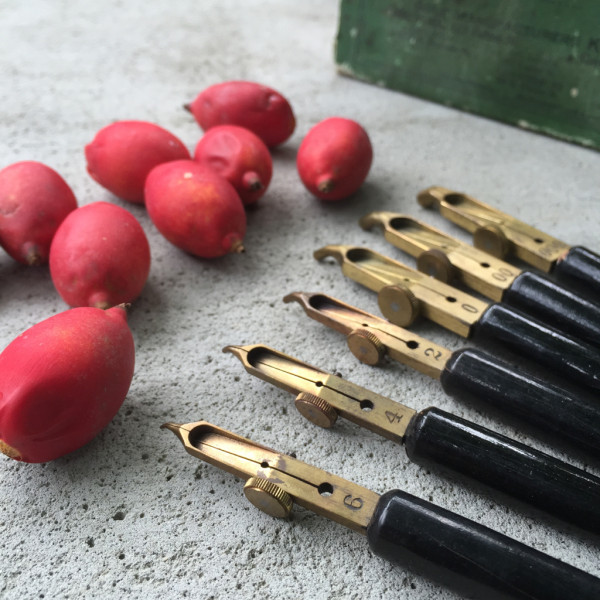My first glass pen was a souvenir from a friend. I no longer have it, but it began a low-key love of this alternative writing instrument.
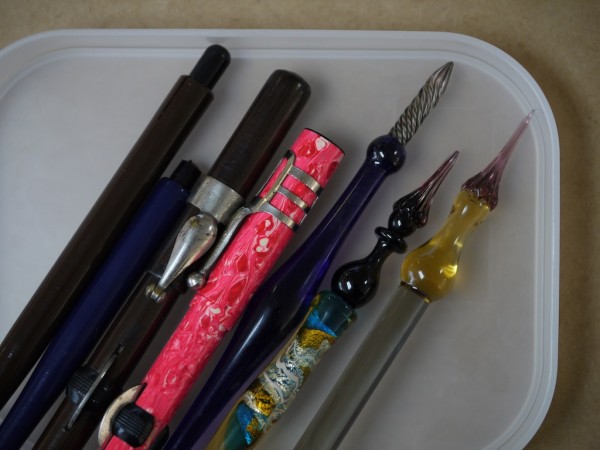
Today’s glass pen is usually marketed as a calligraphy pen, even if most don’t write all that well. Much of that can be traced to the style of the nib. The ones with vertical grooves, which are deeper at the base then become more shallow at the tip, can’t handle ink well compared to the ones with grooves that go around in a spiral.
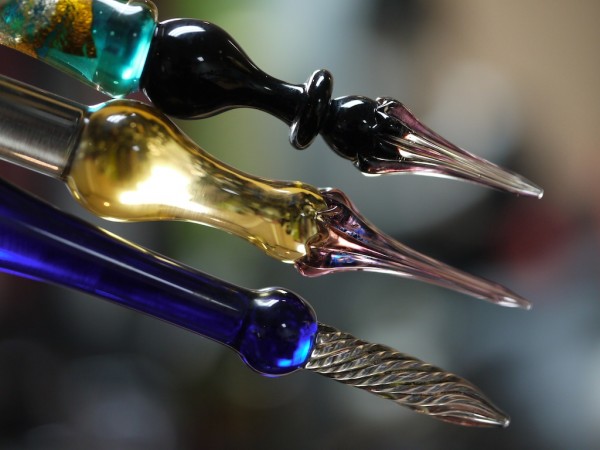
Crescent fillers with replaceable glass nibs were popular during the Second World War, when metal was in short supply and much needed for the war effort. These are both Spors pens – the almost vertical grooves work in this case, because these pens have a rubber sac inside the barrel to hold ink, and are not meant to be dipped.

One of the wonderful things about these Spors pens is the range of effects they can create with ink. They’re capable of very fine lines, but can also make wide, juicy lines when held almost parallel to the paper surface.
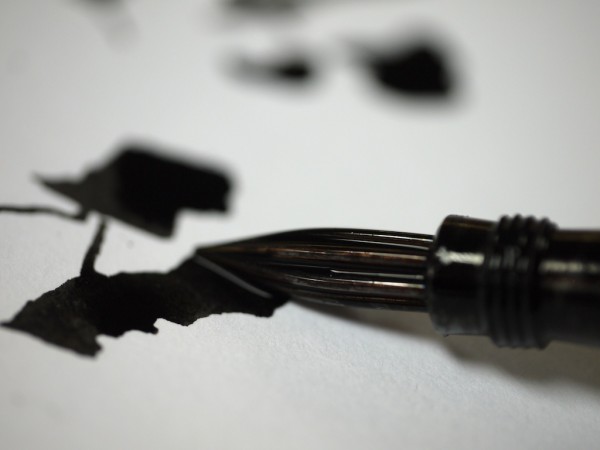
This pen photographs well, but isn’t a good writer.
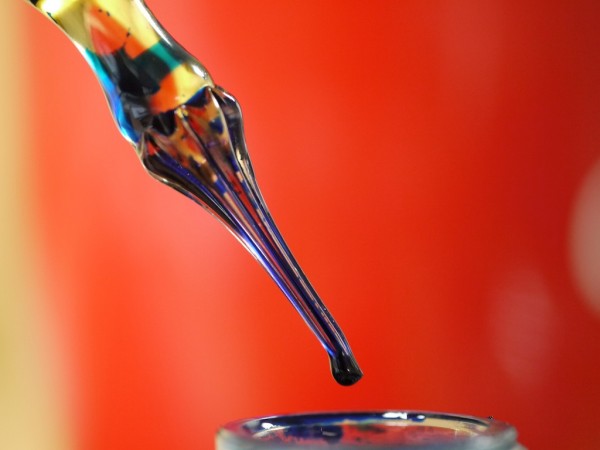
It is, however, interesting to draw with.
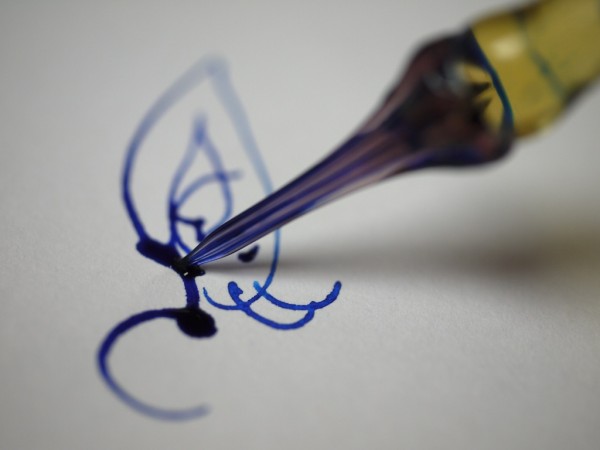
These are traveling glass-nibbed pens. When not in use, they can be stored tip-inside-shaft to protect the glass.
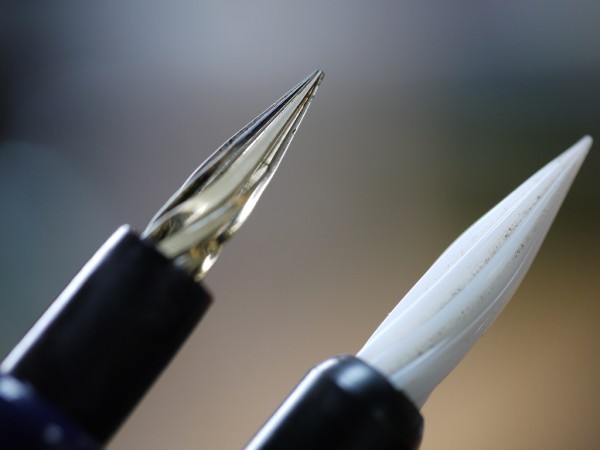
I need more of these pens, but I can’t seem to find any.
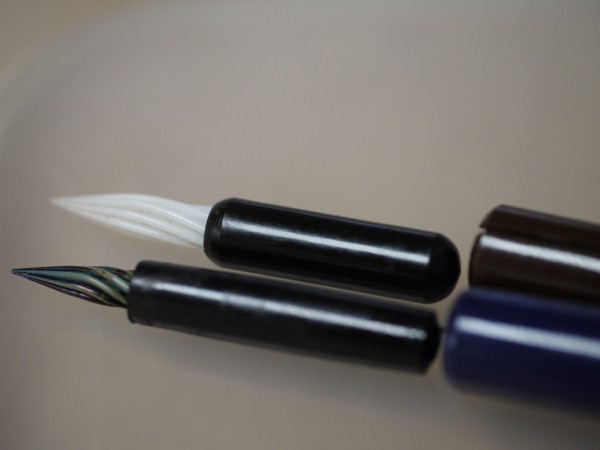
The spiral grooves let ink cling, and somehow control the speed at which it travels to the tip. I’m sure physics has an explanation for this, as it has for most things.
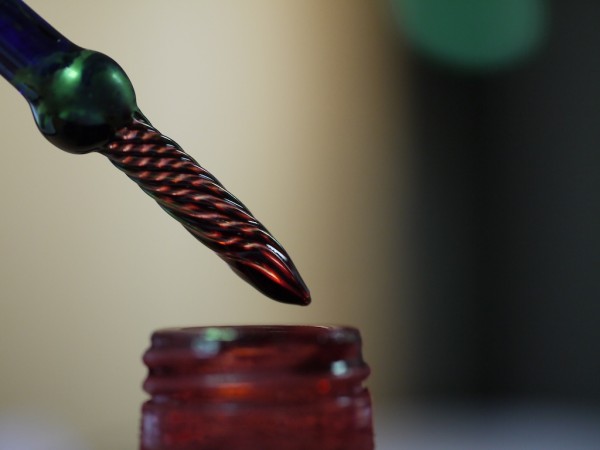
The winner in the one-dip-many-words marathon is this traveling pen. I can’t believe I eked out 5 alphabets and a sentence with a single dip.
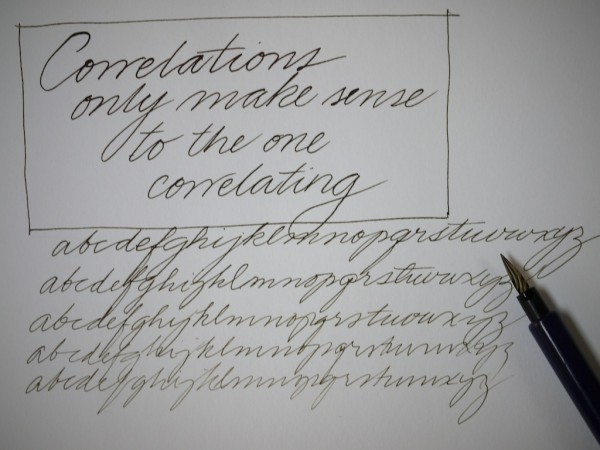
If you love playing with ink, glass pens make it easy to achieve multi-colored effects. Remember to swirl the nib in water and dry with a paper towel in between dips. This was done with a single glass pen, three open ink bottles, and bated breath.

